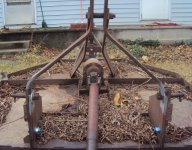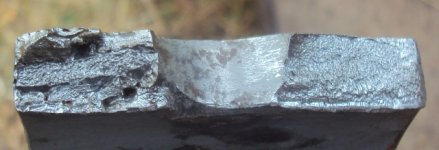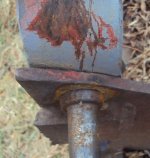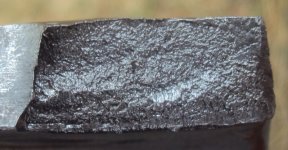Gary Fowler
Super Star Member
- Joined
- Jun 23, 2008
- Messages
- 11,998
- Location
- Bismarck Arkansas
- Tractor
- 2009 Kubota RTV 900, 2009 Kubota B26 TLB & 2010 model LS P7010
That old SA 200 Lincoln will be loaded to the gills if you fire up a 3/16" 5P downhill on a pipeline, but if properly tuned it will labor along all day, everyday and keep on ticking because it has solid copper windings. I have seen them hooked togethere to arc gouge with so you get 400 amps.
Regarding the original posters questions, I think that when they stated not recommended for low voltage welders, they were speaking of the Harbor Freight type machines that even though they run on 230 V the transformers capacity and duty cycle is only like 140 amps or so for like 5 minutes. Output voltages on DC machines rarely exceed 40 volts regardless of capacity of the machine. I dont know what the AC machines run but I would expect them to be fairly low to avoid the possibility of electrocution.
As for rods, just buy the 7018 AC rod and you can use it on AC or DC. You can run the DC rods in the Lincoln buzz box but they are extremely hard to start and will occassionally arc out on you for no reason. I welded with them for several years back in the late 60s at my Dad's farm and they worked OK for everything but overhead work and then it was a real pain to keep them burning. Overhead requires a very short arc and AC machines dont like to work with short arc length. For horizontal and flat, they worked OK, just hard to start and sometimes they arc out and you have to restart them.
Regarding the original posters questions, I think that when they stated not recommended for low voltage welders, they were speaking of the Harbor Freight type machines that even though they run on 230 V the transformers capacity and duty cycle is only like 140 amps or so for like 5 minutes. Output voltages on DC machines rarely exceed 40 volts regardless of capacity of the machine. I dont know what the AC machines run but I would expect them to be fairly low to avoid the possibility of electrocution.
As for rods, just buy the 7018 AC rod and you can use it on AC or DC. You can run the DC rods in the Lincoln buzz box but they are extremely hard to start and will occassionally arc out on you for no reason. I welded with them for several years back in the late 60s at my Dad's farm and they worked OK for everything but overhead work and then it was a real pain to keep them burning. Overhead requires a very short arc and AC machines dont like to work with short arc length. For horizontal and flat, they worked OK, just hard to start and sometimes they arc out and you have to restart them.




